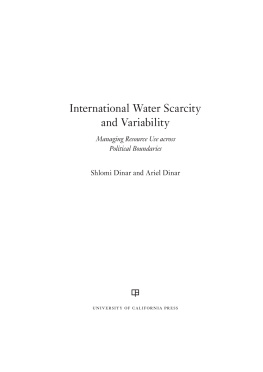Alan P. Sullivan - Archaeological Variability and Interpretation in Global Perspective
Here you can read online Alan P. Sullivan - Archaeological Variability and Interpretation in Global Perspective full text of the book (entire story) in english for free. Download pdf and epub, get meaning, cover and reviews about this ebook. year: 2016, publisher: University Press of Colorado, genre: Romance novel. Description of the work, (preface) as well as reviews are available. Best literature library LitArk.com created for fans of good reading and offers a wide selection of genres:
Romance novel
Science fiction
Adventure
Detective
Science
History
Home and family
Prose
Art
Politics
Computer
Non-fiction
Religion
Business
Children
Humor
Choose a favorite category and find really read worthwhile books. Enjoy immersion in the world of imagination, feel the emotions of the characters or learn something new for yourself, make an fascinating discovery.

- Book:Archaeological Variability and Interpretation in Global Perspective
- Author:
- Publisher:University Press of Colorado
- Genre:
- Year:2016
- Rating:4 / 5
- Favourites:Add to favourites
- Your mark:
- 80
- 1
- 2
- 3
- 4
- 5
Archaeological Variability and Interpretation in Global Perspective: summary, description and annotation
We offer to read an annotation, description, summary or preface (depends on what the author of the book "Archaeological Variability and Interpretation in Global Perspective" wrote himself). If you haven't found the necessary information about the book — write in the comments, we will try to find it.
Archaeological Variability and Interpretation in Global Perspective — read online for free the complete book (whole text) full work
Below is the text of the book, divided by pages. System saving the place of the last page read, allows you to conveniently read the book "Archaeological Variability and Interpretation in Global Perspective" online for free, without having to search again every time where you left off. Put a bookmark, and you can go to the page where you finished reading at any time.
Font size:
Interval:
Bookmark:

Variability and
Interpretation in
Global Perspective
Variability and
Interpretation in
Global Perspective
and Deborah I. Olszewski
5589 Arapahoe Avenue, Suite 206C
Boulder, Colorado 80303
Printed in the United States of America
 The University Press of Colorado is a proud member of Association of American University Presses.
The University Press of Colorado is a proud member of Association of American University Presses.Working with Archaeological Variability in the Twenty-First CenturyThinking about Materiality, Epistemology, and Ontology
Advances in Interpreting Regional Archaeological Records
A Lithic Perspective on Ecological Dynamics in the Upper Pleistocene of Western Eurasia
The Significance of Persistent Places in Shaping Regional Settlement History: The Case of the Mimbres Mogollon
Reductive Technology and the Epipaleolithic of the Middle East and North Africa
Context and Complexity on the Arid Margins of Australia: Assessing Human Reponses to an Unpredictable Environment
Theoretical Implications of Artifact-Scatter Lithic Assemblage Variability for Mobility-Based Models of Technological Organization
Venerable Sites Revisited
Timelessness and the Legacy of Archaeological Cartography
Sherd Cross-Joins, Ceramic Use-Wear, and Depositional History: Rethinking the Sociopolitical Aftermath of a Collapsed Bronze Age Cistern at Myrtos-Pyrgos, Crete
Estimating the Population Size of Casas Grandes: Empirical Issues and Theoretical Consequences
Biface Production at Tabun: Manufacture, Maintenance, and Morphological Variability
Cross-Cultural, Conceptual, and Experimental Perspectives
Celebrating the Dead and Recrafting Social Identity: Placing Prehistoric Mortuary Practices in Broader Social Context
Flint from the Ancestors: Ritualized Use of Stone Tools in the Prehistoric Southwest
Form, Function, and Mental Templates in Paleolithic Archaeology
The Role of Controlled Experiments in Understanding Variation in Flake Production
Variability and
Interpretation in
Global Perspective
Working with Archaeological Variability in the Twenty-First Century
Font size:
Interval:
Bookmark:
Similar books «Archaeological Variability and Interpretation in Global Perspective»
Look at similar books to Archaeological Variability and Interpretation in Global Perspective. We have selected literature similar in name and meaning in the hope of providing readers with more options to find new, interesting, not yet read works.
Discussion, reviews of the book Archaeological Variability and Interpretation in Global Perspective and just readers' own opinions. Leave your comments, write what you think about the work, its meaning or the main characters. Specify what exactly you liked and what you didn't like, and why you think so.




